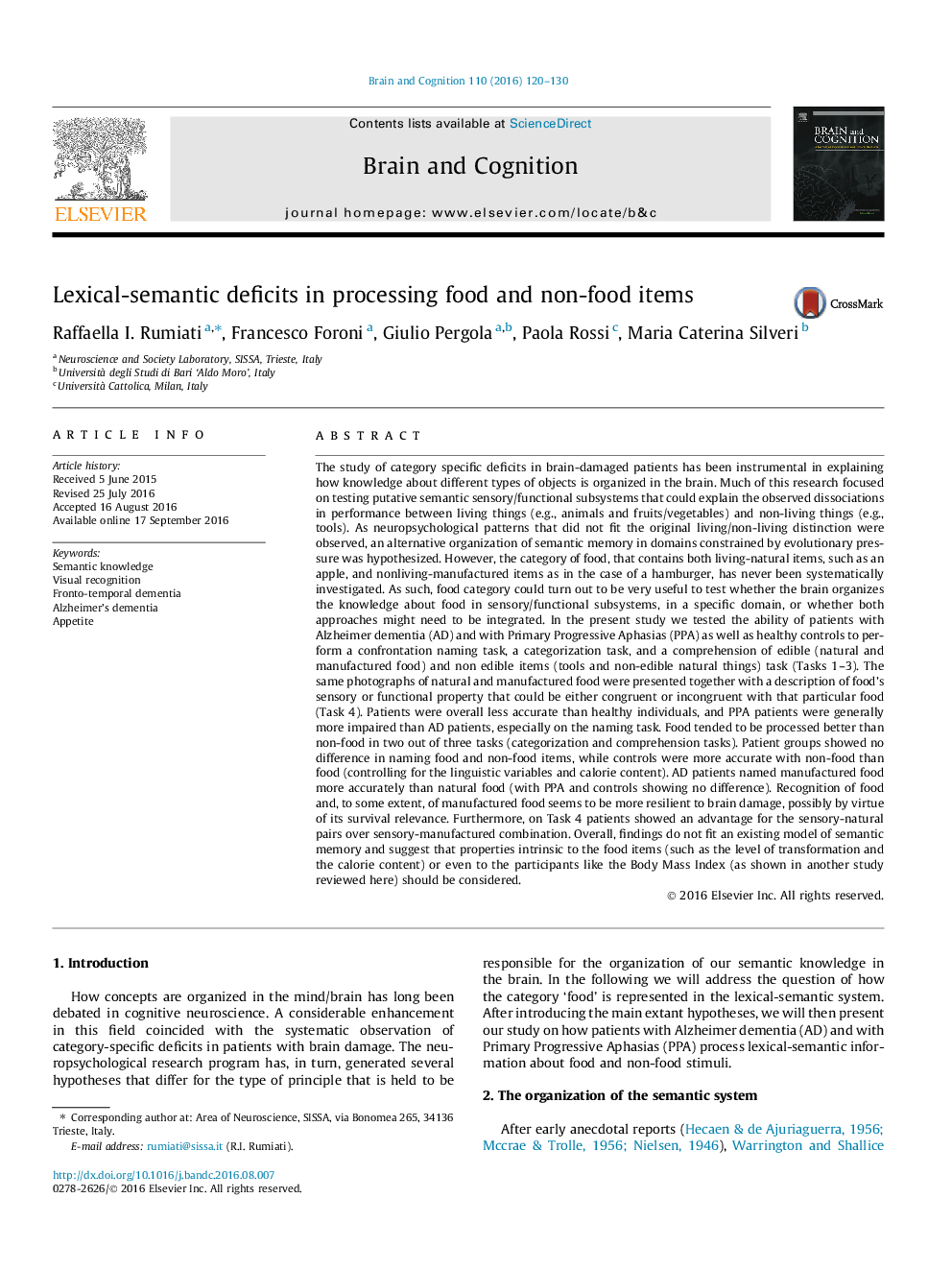| کد مقاله | کد نشریه | سال انتشار | مقاله انگلیسی | نسخه تمام متن |
|---|---|---|---|---|
| 5041213 | 1473961 | 2016 | 11 صفحه PDF | دانلود رایگان |
- The study aims at evaluating the lexical-semantic knowledge about food.
- Patients were overall less accurate than controls.
- PPA were generally more impaired than AD patients.
- Food tended to be processed better than non food items.
The study of category specific deficits in brain-damaged patients has been instrumental in explaining how knowledge about different types of objects is organized in the brain. Much of this research focused on testing putative semantic sensory/functional subsystems that could explain the observed dissociations in performance between living things (e.g., animals and fruits/vegetables) and non-living things (e.g., tools). As neuropsychological patterns that did not fit the original living/non-living distinction were observed, an alternative organization of semantic memory in domains constrained by evolutionary pressure was hypothesized. However, the category of food, that contains both living-natural items, such as an apple, and nonliving-manufactured items as in the case of a hamburger, has never been systematically investigated. As such, food category could turn out to be very useful to test whether the brain organizes the knowledge about food in sensory/functional subsystems, in a specific domain, or whether both approaches might need to be integrated. In the present study we tested the ability of patients with Alzheimer dementia (AD) and with Primary Progressive Aphasias (PPA) as well as healthy controls to perform a confrontation naming task, a categorization task, and a comprehension of edible (natural and manufactured food) and non edible items (tools and non-edible natural things) task (Tasks 1-3). The same photographs of natural and manufactured food were presented together with a description of food's sensory or functional property that could be either congruent or incongruent with that particular food (Task 4). Patients were overall less accurate than healthy individuals, and PPA patients were generally more impaired than AD patients, especially on the naming task. Food tended to be processed better than non-food in two out of three tasks (categorization and comprehension tasks). Patient groups showed no difference in naming food and non-food items, while controls were more accurate with non-food than food (controlling for the linguistic variables and calorie content). AD patients named manufactured food more accurately than natural food (with PPA and controls showing no difference). Recognition of food and, to some extent, of manufactured food seems to be more resilient to brain damage, possibly by virtue of its survival relevance. Furthermore, on Task 4 patients showed an advantage for the sensory-natural pairs over sensory-manufactured combination. Overall, findings do not fit an existing model of semantic memory and suggest that properties intrinsic to the food items (such as the level of transformation and the calorie content) or even to the participants like the Body Mass Index (as shown in another study reviewed here) should be considered.
Journal: Brain and Cognition - Volume 110, December 2016, Pages 120-130
